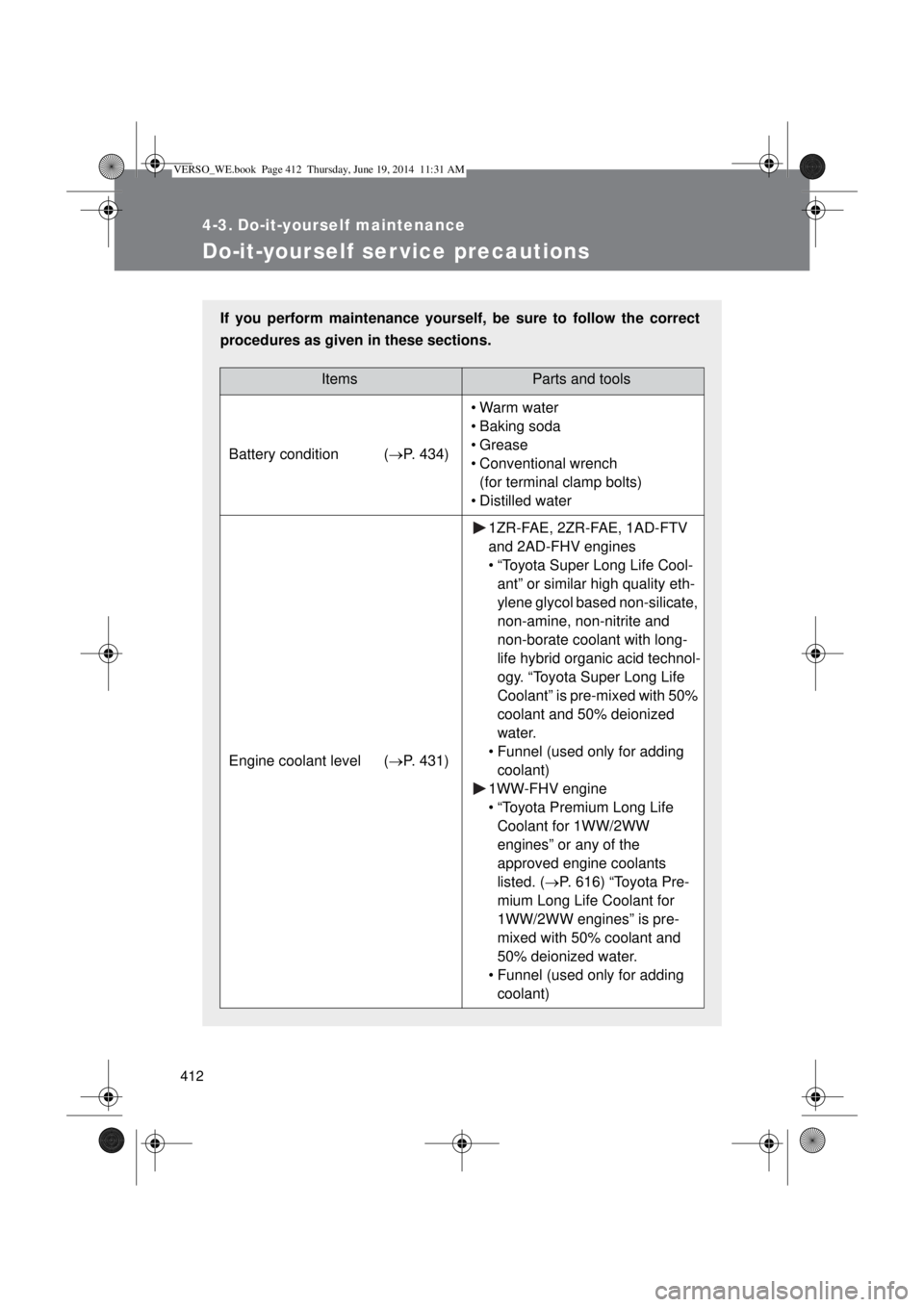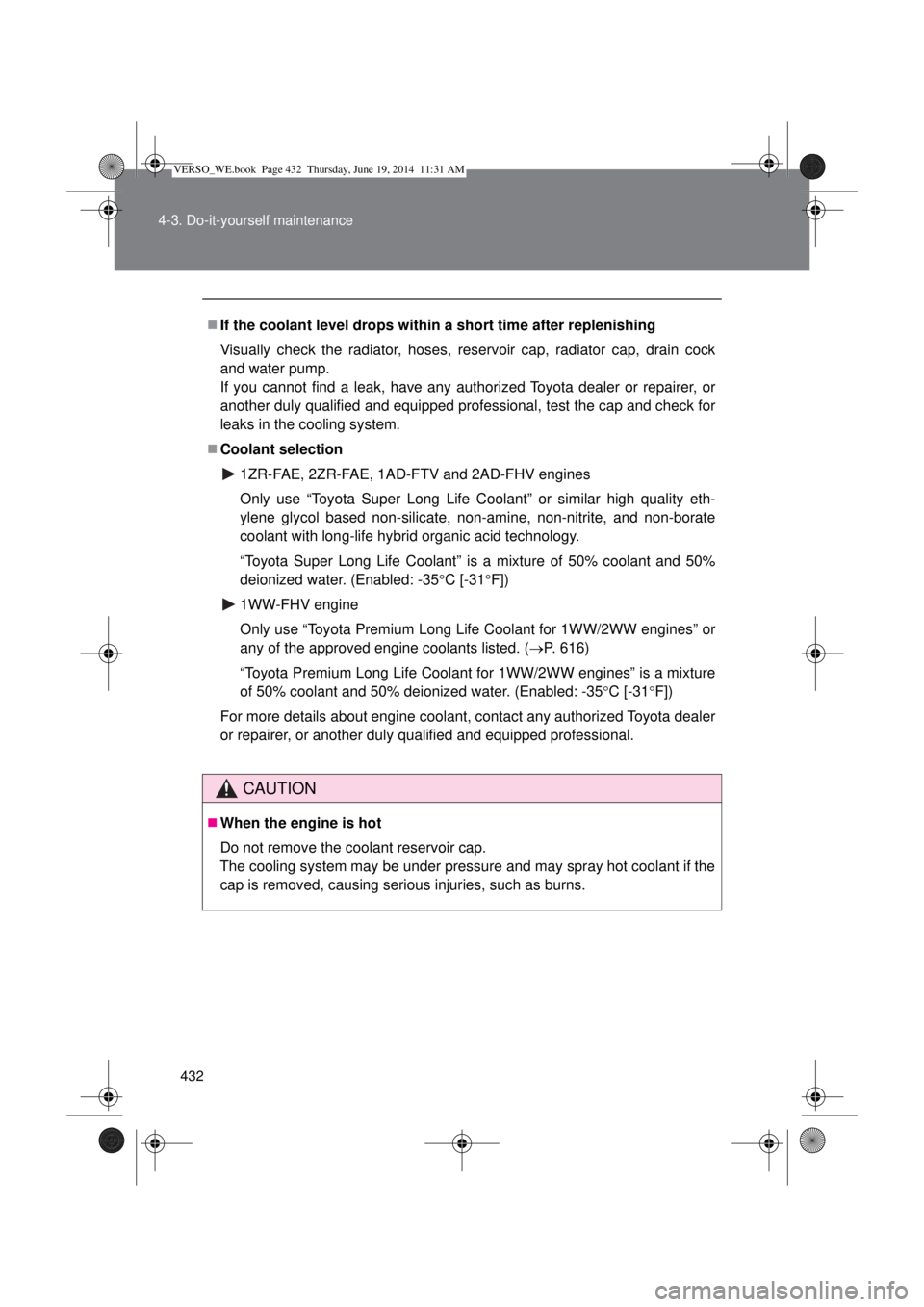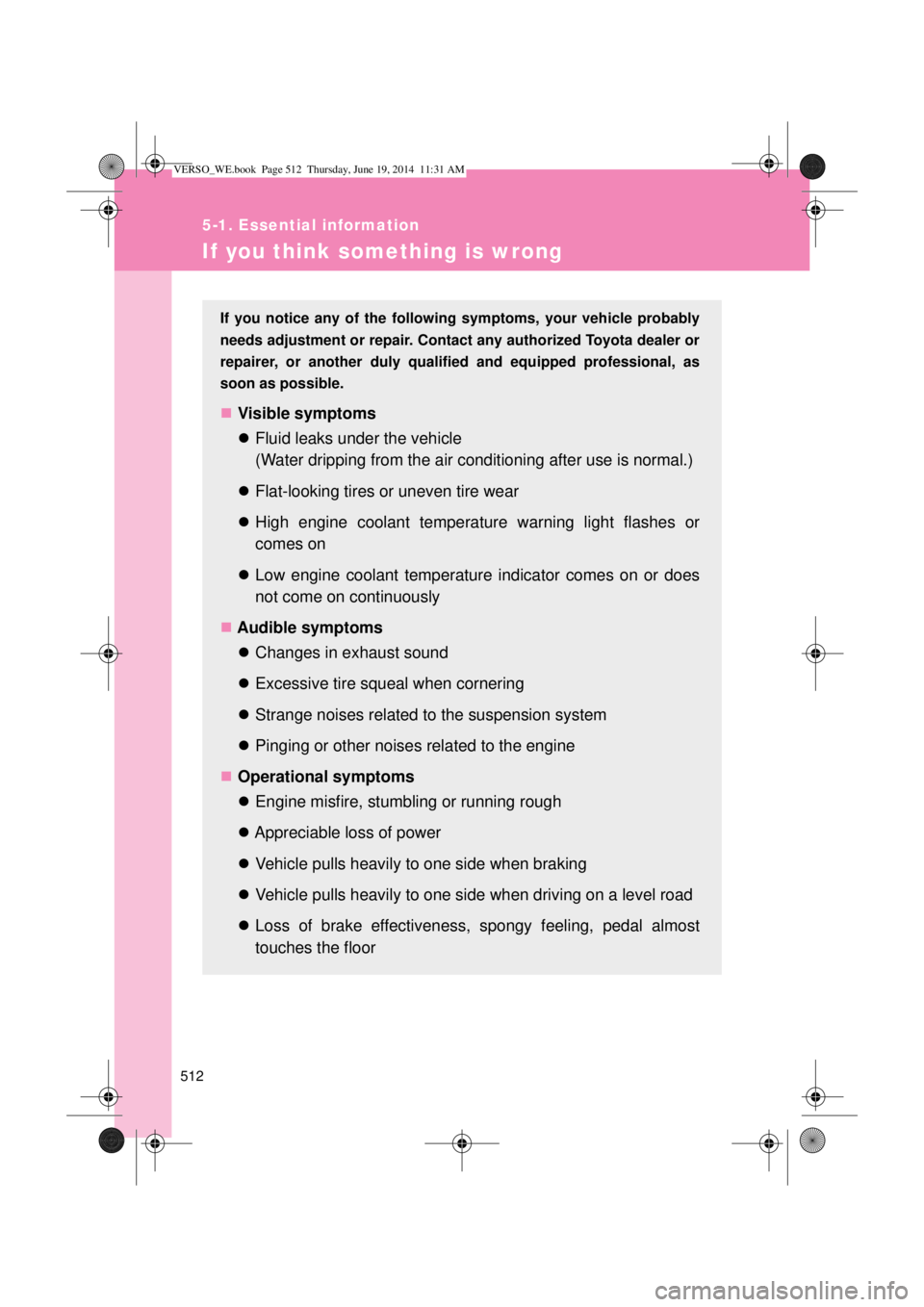Page 232 of 650

232 2-2. Instrument cluster
Instrument panel light control
The brightness of the instrument panel lights, for when the headlight
switch is on, can be adjusted 5 brightness levels.
Press the instrument panel light
control switch.
The instrument panel brightness
changes each time the switch is
pressed. To quickly change
between the brightest level and
previous condition, press and
hold the switch.
The illumination level will be set automatically 10 seconds
after the switch was last pressed.
Pressing the display change button before the 10 seconds have
passed will also set the illumination level.
NOTICE
To prevent damage to the engine and its components
Do not let the indicator needle of the tachometer enter the red zone, which
indicates the maximum engine speed.
The engine may be overheating if the high engine coolant temperature
warning light (Red) flashes or comes on. In this case, immediately stop the
vehicle in a safe place, and check the engine after it has cooled com-
pletely. (P. 589)
VERSO_WE.book Page 232 Thursday, June 19, 2014 11:31 AM
Page 412 of 650

412
4-3. Do-it-yourself maintenance
Do-it-yourself ser vice precautions
If you perform maintenance yourself, be sure to follow the correct
procedures as given in these sections.
ItemsParts and tools
Battery condition (P. 434)
• Warm water
• Baking soda
• Grease
• Conventional wrench
(for terminal clamp bolts)
• Distilled water
Engine coolant level (P. 431)
1ZR-FAE, 2ZR-FAE, 1AD-FTV
and 2AD-FHV engines
• “Toyota Super Long Life Cool-
ant” or similar high quality eth-
ylene glycol based non-silicate,
non-amine, non-nitrite and
non-borate coolant with long-
life hybrid organic acid technol-
ogy. “Toyota Super Long Life
Coolant” is pre-mixed with 50%
coolant and 50% deionized
water.
• Funnel (used only for adding
coolant)
1WW-FHV engine
• “Toyota Premium Long Life
Coolant for 1WW/2WW
engines” or any of the
approved engine coolants
listed. (P. 616) “Toyota Pre-
mium Long Life Coolant for
1WW/2WW engines” is pre-
mixed with 50% coolant and
50% deionized water.
• Funnel (used only for adding
coolant)
VERSO_WE.book Page 412 Thursday, June 19, 2014 11:31 AM
Page 420 of 650
420
4-3. Do-it-yourself maintenance
Engine compar tment
Gasoline engine (1ZR-FAE and 2ZR-FAE engines)
Washer fluid tank (P. 438)
Engine coolant reservoir
(P. 431)
Engine oil level dipstick
(P. 424)
Engine oil filler cap
(P. 427)Fuse box (P. 469)
Battery (P. 434)
Electric cooling fan
Condenser (P. 433)
Radiator (P. 433)
VERSO_WE.book Page 420 Thursday, June 19, 2014 11:31 AM
Page 421 of 650
421 4-3. Do-it-yourself maintenance
4
Maintenance and care
Diesel engine (1AD-FTV and 2AD-FHV engines)
Washer fluid tank (P. 438)
Engine coolant reservoir
(P. 431)
Engine oil level dipstick
(P. 424)
Engine oil filler cap
(P. 427)Fuel filter (P. 439)
Fuse box (P. 469)
Battery (P. 434)
Condenser (P. 433)
Electric cooling fans
Intercooler (P. 433)
Radiator (P. 433)
VERSO_WE.book Page 421 Thursday, June 19, 2014 11:31 AM
Page 422 of 650
422 4-3. Do-it-yourself maintenance
Diesel engine (1WW-FHV engine)
Washer fluid tank (P. 438)
Engine coolant reservoir
(P. 431)
Engine oil filler cap
(P. 427)
Engine oil level dipstick
(P. 424)Fuel filter (P. 439)
Fuse box (P. 469)
Battery (P. 434)
Condenser (P. 433)
Electric cooling fans
Intercooler (P. 433)
Radiator (P. 433)
VERSO_WE.book Page 422 Thursday, June 19, 2014 11:31 AM
Page 431 of 650
431 4-3. Do-it-yourself maintenance
4
Maintenance and care
Engine coolant
The coolant level is satisfactory if it is between the “FULL” and “LOW”
lines on the reservoir when the engine is cold.
Gasoline engine
Reservoir cap
“FULL”
“LOW”
If the level is on or below the
“LOW” line, add coolant up to the
“FULL” line.
Diesel engine
Reservoir cap
“FULL”
“LOW”
If the level is on or below the
“LOW” line, add coolant up to the
“FULL” line.
VERSO_WE.book Page 431 Thursday, June 19, 2014 11:31 AM
Page 432 of 650

432 4-3. Do-it-yourself maintenance
If the coolant level drops within a short time after replenishing
Visually check the radiator, hoses, reservoir cap, radiator cap, drain cock
and water pump.
If you cannot find a leak, have any authorized Toyota dealer or repairer, or
another duly qualified and equipped professional, test the cap and check for
leaks in the cooling system.
Coolant selection
1ZR-FAE, 2ZR-FAE, 1AD-FTV and 2AD-FHV engines
Only use “Toyota Super Long Life Coolant” or similar high quality eth-
ylene glycol based non-silicate, non-amine, non-nitrite, and non-borate
coolant with long-life hybrid organic acid technology.
“Toyota Super Long Life Coolant” is a mixture of 50% coolant and 50%
deionized water. (Enabled: -35C [-31F])
1WW-FHV engine
Only use “Toyota Premium Long Life Coolant for 1WW/2WW engines” or
any of the approved engine coolants listed. (P. 616)
“Toyota Premium Long Life Coolant for 1WW/2WW engines” is a mixture
of 50% coolant and 50% deionized water. (Enabled: -35C [-31F])
For more details about engine coolant, contact any authorized Toyota dealer
or repairer, or another duly qualified and equipped professional.
CAUTION
When the engine is hot
Do not remove the coolant reservoir cap.
The cooling system may be under pressure and may spray hot coolant if the
cap is removed, causing serious injuries, such as burns.
VERSO_WE.book Page 432 Thursday, June 19, 2014 11:31 AM
Page 512 of 650

512
5-1. Essential information
If you think something is wrong
If you notice any of the following symptoms, your vehicle probably
needs adjustment or repair. Contact any authorized Toyota dealer or
repairer, or another duly qualified and equipped professional, as
soon as possible.
Visible symptoms
Fluid leaks under the vehicle
(Water dripping from the air conditioning after use is normal.)
Flat-looking tires or uneven tire wear
High engine coolant temperature warning light flashes or
comes on
Low engine coolant temperature indicator comes on or does
not come on continuously
Audible symptoms
Changes in exhaust sound
Excessive tire squeal when cornering
Strange noises related to the suspension system
Pinging or other noises related to the engine
Operational symptoms
Engine misfire, stumbling or running rough
Appreciable loss of power
Vehicle pulls heavily to one side when braking
Vehicle pulls heavily to one side when driving on a level road
Loss of brake effectiveness, spongy feeling, pedal almost
touches the floor
VERSO_WE.book Page 512 Thursday, June 19, 2014 11:31 AM